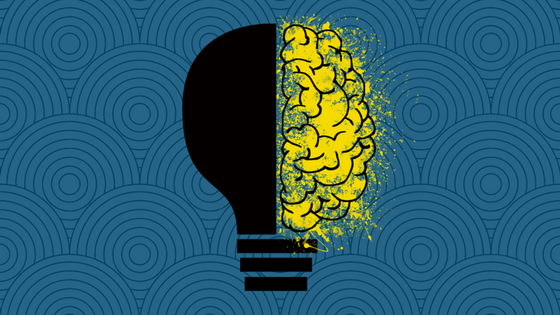Techie Time – Your Cheat Sheet to Understanding Online Lingo

Technology is without a doubt ever-present in our current society and day-to-day lives.
Days start off with the sounds of our alarm clocks beeping, your favorite new song blaring from your phone’s speakers, or even an automatic coffee drip system.
Nighttime is mixed with Netflix binge-watching, checking up on emails, or social media scrolling, liking, and commenting.
During the day our phones, tablets, and portable computers (a.k.a laptops) are close by, because in the modern day STAYING CONNECTED IS A MUST.

Since the internet became accessible to the public back in the 1990s, -let’s first remind ourselves that the world wide web isn’t even 30 years old yet- online networking has sky-rocketed in comparison to what it used to be.
You know the term “surfing the web” – well, people don’t really say that anymore… Nowadays there is so much lingo when it comes to ‘web talk’ that IT IS hard to keep up.
From social media slang such as LOL (Laughing Out Loud), to computer and information technology workers’ talk -even their nicknames are jargon: techies-, to viral fads (the use of the word viral in itself is a perfect example of how different word meanings can be online versus in ‘real life’), the internet is full of NEW WORD DEFINITIONS AND MEANINGS.
To help you stay on track with THE TALK OF THE MOMENT, we’ve compiled a list of well-known (or better yet: you-probably-should-know) words inspired from web language, techies, and social networking.
 AdWords
AdWords
“AdWords (Google AdWords) is an advertising service by Google for businesses wanting to display ads on Google and its advertising network. The AdWords program enables businesses to set a budget for advertising and only pay when people click the ads. The ad service is largely focused on keywords.”
– Webopedia
*P.S. The term ‘keywords’ is defined below as well!
Bounce Rate
“Bounce rate is the percentage of visitors who come to your website and leave without viewing any other pages on your website. — People are coming to your site and either finding what they want but not anything else or not finding what they want at all.”
– Kissmetrics
*Tip from the team: make sure your website has content that will keep visitors coming back for MORE.
Cloud Computing / Internet Cloud
“Cloud computing refers to applications and services offered over the Internet. These services are offered from data centers all over the world, which collectively are referred to as the “cloud.” — The idea of the “cloud” simplifies the many network connections and computer systems involved in online services.”
– Tech Terms
*Examples of cloud computing services include, but are not limited to: Google Drive and Dropbox.
Cryptocurrency
“Like money, a cryptocurrency is a medium of exchange. However, the cryptocurrency is virtual or digital, meaning that there is no physical coin or bill that owners of the currency possess. — Additionally, a common characteristic of many cryptocurrencies is their decentralized nature: Whereas typical currencies are issued from a central bank, cryptocurrencies cut out the middlemen as a peer-to-peer system. ”
– Discover
*Examples of cryptocurrencies include, but are not limited to: Bitcoin, Ethereum, and Litecoin.
via GIPHY
Domain Name
“A domain name is your website name. — A domain name is used for finding and identifying computers on the Internet. Computers use IP addresses, which are a series of numbers. However, it is difficult for humans to remember strings of numbers. Because of this, domain names were developed and used to identify entities on the Internet rather than using IP addresses.”
– Website.com
*Tip from the team: think of the domain name as a street address (with the street name and number), and the IP address like the location coordinates.
DNS
“[DNS]—(Domain Name System) The Internet’s system for converting alphabetic names into numeric IP addresses. For example, when a Web address (URL) is typed into a browser, DNS servers return the IP address of the Web server associated with that name. In this made-up example, the DNS converts the URL www.company.com into the IP address 204.0.8.51. Without DNS, you would have to type the series of four numbers and dots into your browser to retrieve the website.”
– PCMag
Engagement Rate
“An engagement rate is a metric that measures the level of engagement that a piece of created content is receiving from an audience. It shows how much people interact with the content. Factors that influence engagement include users’ comments, shares, likes, and more.”
– Trackmaven
Facebook Insights
“Facebook’s free analytics tool, Insights, allows you to easily track the performance of your business or brand’s Page. With so many different measurable elements—such as Likes, engagement, reach, and demographics—Facebook Insights gives you a clear picture of where your social strategy stands. — Having access to more information allows you to much more easily navigate Facebook, allowing you to see what areas you’re nailing—and what ones miss the mark.”
– Hootsuite
*Helpful read: ‘4 Essential Facebook Insights You Can Analyze to Improve Engagement’

Growth Hacking
“Growth hacking threw out the playbook of traditional marketing and replaced it with only what is testable, trackable, and scalable. — While traditional marketing chases vague notions like “branding” and “mind share,” growth hackers relentlessly pursue users and growth — and when they do it right, those users beget more users, who beget more users. They are the inventors, operators, and mechanics of their own self-sustaining and self-propagating growth machine that can take a start-up from nothing to something.”
– Huffingtonpost
*Helpful read: ‘6 Reasons Why Your Facebook Page Should NOT Replace Your Website‘
HTML
“HTML is short for HyperText Markup Language. HTML is used to create electronic documents (called pages) that are displayed on the World Wide Web. — Every web page you see on the Internet is written using one version of HTML code or another. — HTML code ensures the proper formatting of text and images so that your Internet browser may display them as they are intended to look.”
– Computer Hope
Influencer
“An influencer is an individual who has the power to affect purchase decisions of others because of his/her authority, knowledge, position or relationship with his/her audience. — Influencers in social media are people who have built a reputation for their knowledge and expertise on a particular topic. — Brands love social media influencers because they can create trends and encourage their followers to buy products they promote.”
– Influencer MarketingHub
Keywords
“A keyword is a term chosen to describe the content of a web page. — People use keywords in their search queries to find what they are looking for online. — Seeing the competitors that rank for keywords can give a site owner an idea of the difficulty to achieve market penetration.”
– TechTarget
via GIPHY
Meme
“A ‘meme’ is a virally-transmitted cultural symbol or social idea. — The majority of modern memes are captioned photos that are intended to be funny, often as a way to publicly ridicule human behavior. Other memes can be videos and verbal expressions. Some memes have heavier and more philosophical content.”
– Lifewire
*P.S. the clip above is an example of a meme created from the movie, Anchorman.
Organic
“Simply put, organic marketing across social networks can quite possibly be anything that isn’t paid advertising. — Content marketing is a feature of organic social media marketing that can help you gain visibility across social networks. — To execute a successful ‘organic’ social media campaign can take a lot of strategy in the early stages, needing to utilise multiple creative minds putting their heads together to come up with ways of keeping customers engaged as well as coming up with shareable original content, while also featuring varied content collateral.”
– Digital Clarity
Phishing
“Phishing is a type of email fraud in which the perpetrator sends out emails that appear to come from a legitimate service or reputable company, such as a bank or an email service provider. These emails aim to lure recipients to reveal confidential information that the perpetrator can use for their financial advantage – for example, online banking log-in details and passwords.”
– Our Community
*Helpful read: ‘Phishing Test for Employees – Why it’s Important’
Reach
“Reach [is defined as] the number of people who see your content. — The main purpose of social media marketing is to raise brand awareness, which means reaching as many people as possible and growing your audience. — High-quality engagement will often drive reach — up as well.”
– AdWeek
Responsive Design
“Responsive web design (RWD) is a web development approach that creates dynamic changes to the appearance of a website, depending on the screen size and orientation of the device being used to view it. RWD is one approach to the problem of designing for the multitude of devices available to customers, ranging from tiny phones to huge desktop monitors. — In responsive design, page elements reshuffle as the viewport grows or shrinks. A three-column desktop design may reshuffle to two columns for a tablet and a single column for a smartphone.”
– NNGroup
*Helpful read: ‘5 Reasons to Consider a Website Redesign’
SEO
“A broad definition is that search engine optimization is the art and science of making web pages attractive to the search engines. — The goal of SEO is to get a web page high search engine ranking. — This is especially critical because most people who use search engines only look at the first page or two of the search results, so for a page to get high traffic from a search engine, it has to be listed in those first two pages.”
– The Balance
Traffic
“To most, organic traffic consists of visits from search engines, while direct traffic is made up of visits from people entering your company URL into their browser. — Beyond organic and direct traffic, you must understand the difference between all of your traffic sources — a breakdown [includes, but is not limited to]: Social (Traffic from a social network, such as Facebook, LinkedIn, Twitter, or Instagram), Organic (Traffic from search engine results that is earned, not paid), Paid search (Traffic from search engine results that is the result of paid advertising via Google AdWords or another paid search platform) — Traffic data is a great way to take the temperature of your website and marketing initiatives.”
– SmartBug.
VR
“Virtual Reality (VR) is the use of computer technology to create a simulated environment. Unlike traditional user interfaces, VR places the user inside an experience. — By simulating as many senses as possible, such as vision, hearing, touch, even smell, the computer is transformed into a gatekeeper to this artificial world.”
– MarxentLabs
via GIPHY
Wishing you a good BOOST OF TECHNOLOGY TERMINOLOGY & KNOWLEDGE. Until next time!
P.S. Keep up with CaribMedia’s insights on the digital world, business tips, and much more by following our BLOG!
Published on February 23rd 2018. Written by Megan Rojer.



Sorry, the comment form is closed at this time.